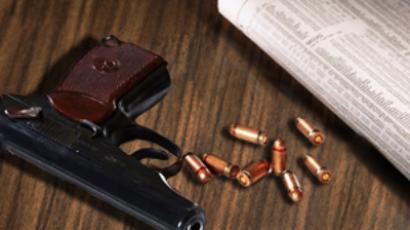Editor at top U.S newspaper resigns over censorship
A New York newspaper veteran claims that censorship at one of the world's biggest journals forced her to quit her dream job after 30 years.
Now, Jerelle Kraus hopes to turn the cartoons rejected by the New York Times into a money-spinner.
The NYT is a lion in the newspaper kingdom and, while other breeds may be dying off, the 'grey lady' (as it's known in Manhattan) remains a national top seller.
The 'op-ed' section is a favorite among readers. There, non-staff writers express opinions contrary to those found in the editorial. But when it comes to illustrations, all bets are off.
Ms Kraus, who worked as Art Director for the op-ed section, alleges that scores of drawings commissioned for the paper were not printed for being either too provocative or not politically correct.
“It was shocking to me how often I had to cut back on what I was doing,” she said.
Kraus spent 13 years selecting illustrations to counter the NYT's hard-hitting articles.
But in a place where freedom of expression is supposed to prevail, cartoons confronting issues like abortion, religion and the economy were often rejected.
“It is impossible to be completely free because it’s an edited paper,” Jerelle says.
After walking out citing creative constraints, she wrote about her experiences. Kraus’s new book juxtaposes the drawings which the NYT saw fit to print against the ones that were censored.
The list of rejectees includes caricatures of Bill Clinton, Richard Nixon, Ronald Reagan and Henry Kissinger as well as a sweaty, tearful Bush that was redrawn before making it to print.
Kraus says that editors also drew the line on art considered too sexually explicit.
“Particularly, male editors would be constantly finding genitalia – seeing a thermometer in a snowstorm as an ejaculation and, at the last minute, it got killed,” says Jerelle.
Kraus believes NYT executives consider the pen to be mightier than the sword. But it seems the paper's mantra of “All the news that's fit to print” only applies when it's words – not pictures – which detail a story.













